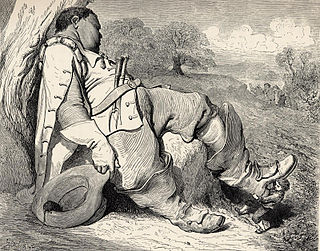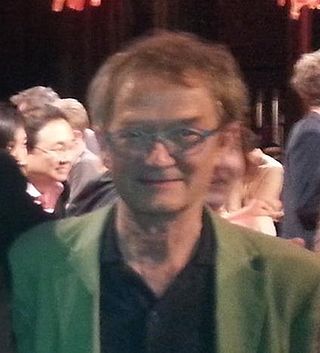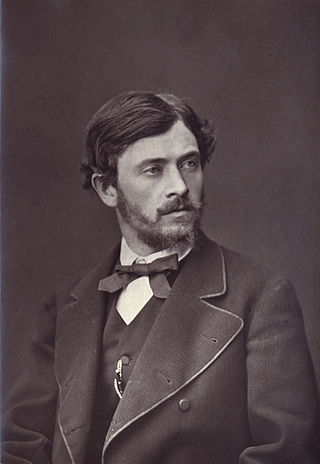
Adelbert von Chamisso was a German poet, writer and botanist. He was commonly known in French as Adelbert de Chamissode Boncourt, a name referring to the family estate at Boncourt.
This article contains information about the literary events and publications of 1814.
This article contains information about the literary events and publications of 1781.

Karl August Varnhagen von Ense was a German biographer, diplomat and soldier.

William Howitt, was a prolific English writer on history and other subjects. Howitt Primary Community School in Heanor, Derbyshire, is named after him and his wife.

Seven-league boots are an element in European folklore. The boots allow the person wearing them to take strides of seven leagues per step, resulting in great speed. The boots are often presented by a magical character to the protagonist to aid in the completion of a significant task.

Hard-Boiled Wonderland and the End of the World is a 1985 novel by Japanese author Haruki Murakami. It was awarded the Tanizaki Prize in 1985. The English translation by Alfred Birnbaum was released in 1991. A strange and dreamlike novel, its chapters alternate between two narratives—"Hard-Boiled Wonderland" and "The End of the World".

"The Shadow" is a literary fairy tale by Danish poet and author Hans Christian Andersen. The tale was first published in 1847.

Dark Romanticism is a literary sub-genre of Romanticism, reflecting popular fascination with the irrational, the demonic and the grotesque. Often conflated with Gothic fiction, it has shadowed the euphoric Romantic movement ever since its 18th-century beginnings. Edgar Allan Poe is often celebrated as one of the supreme exponents of the tradition. Dark Romanticism focuses on human fallibility, self-destruction, judgement, punishment, as well as the psychological effects of guilt and sin.

Paint-on-glass animation is a technique for making animated films by manipulating slow-drying oil paints on sheets of glass. Gouache mixed with glycerine is sometimes used instead. The best-known practitioner of the technique is Russian animator Aleksandr Petrov; he has used it in seven films, all of which have won awards.

Georges Schwizgebel is a Swiss animation film director whose paint-on-glass-animated 2004 film The Man with No Shadow won various awards.
August Brunetti-Pisano, was an Austrian composer.
Schlemiel is a Yiddish term meaning "inept/incompetent person" or "fool". It is a common archetype in Jewish humor, and so-called "schlemiel jokes" depict the schlemiel falling into unfortunate situations.

Der Kanon or more precisely Marcel-Reich-Ranickis Kanon is a large anthology of exemplary works of German literature. Edited by the literary critic Marcel Reich-Ranicki (1920–2013), he called the anthology, announced on 18 June 2001 in the German news magazine Der Spiegel under the title "The Canon of worthwhile German Works", his magnum opus. The five parts appeared from 2002 to 2006 published by Insel Verlag: 1. Novels (2002), 2. Tales/Stories (2003), 3. Dramatic Works (2004), 4. Poetry (2005), and 5. Essays (2006). As expected, the anthology met with opposition and criticism, and even the idea of an anthology was questioned, but Reich-Ranicki called this questioning "incomprehensible, because the lack of a canon would mean relapse into barbarism. Reich-Ranicki sought to differentiate his anthology from previous compilations in his hope to imagine a "reader judge" such as teachers, students, librarians, who would need to draw from this canon because they were in the "first line of those who deal with literature professionally."

Charles Henri Pille was a French painter and illustrator.
Albert Husson was a French playwright and theatre director.
Peter Beauvais was a German television film director and scriptwriter. As a director for three decades, he helped pioneer and significantly influenced the development of German television.

Bernard Étienne Hubert Naudin was a French painter, designer, caricaturist, and engraver.
The Man with No Shadow is a Canadian-Swiss animated short film, directed by Georges Schwizgebel and released in 2004. Adapted from Adelbert von Chamisso's 1814 novella Peter Schlemihl, the film centres on a man who sells his shadow in exchange for wealth, only to become rejected by society for his difference.












